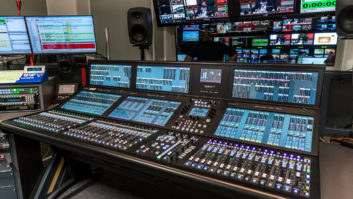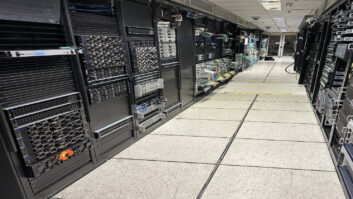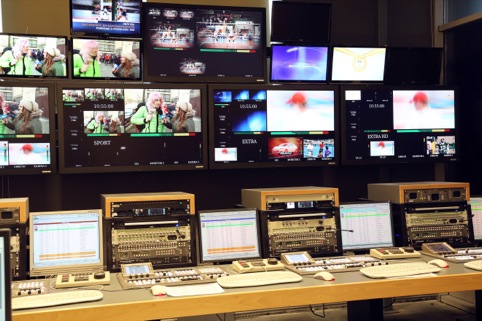
IN 1992, Polish billionaire, Zygmunt Solorz-Żak, launched Poland’s first free-to-air commercial satellite TV channel, Polsat. Today, in pay TV the Polsat Group is the largest provider in Poland and the fourth largest DTH platform in Europe. After a visit in 2008, Reinhard E. Wagner toured the broadcaster again.
Back in 2008 TVBEurope reported on the installation of the new News Operation Centre at Telewizja Polsat. The Polish broadcaster provides a comprehensive multimedia offering with services that include DTH, mobile television, broadband Internet in HSPA/HSPA+ and LTE and mobile telephony services. The total amount of pay digital television subscribers (as of June 30, 2013) is well over 3.5 million and broadband Internet service users approach 200,000.
In total, the Polsat Group offers 130 Polish language TV channels, including general entertainment, sports, music, lifestyle, news/information, children’s, education and movies. They offer all of Poland’s main terrestrial channels, including POLSAT, TVP1, TVP2, TVN and TV4.
As the only DTH operator, offerings include combinations of Polsat Sport, Eurosport and Polsat Sport Extra. In addition, subscribers have access to 37 HD channels as well as VoD/PPV, Catch-up TV, Multiroom, plus TV Mobilna service (based on DVB-T and launched in June 2012) with access to 20 encrypted channels (eight television and 12 radio channels) and to all DTT channels, through various devices (including smartphones, tablets and laptops). Two business segments produce revenue streams with distinct characteristics: TV broadcasting advertising revenue and retail subscription and related revenue
The retail business segment relies heavily on the satellite broadcasting centre as well as the customer management, reporting, sales service and customer relationship management system. Any failure of individual components of the satellite broadcasting centre, including the satellite transponders or any link in the delivery chain, could result in serious disruption to, or suspension of, operations. The new backup satellite centre is under construction and will be ready in the first half of 2014.
In the broadcasting and television production segment IT systems are managing advertising airtime, programme broadcasting and relationships with the advertising customers. If any of the IT systems fail, it could affect the operating of the whole business. Loss or failure to maintain the historical reputation of Cyfrowy Polsat and TV Polsat and the value of all brands would adversely affect the business. Naturally, a great deal of attention is paid to reliability.
New investments into the IT infrastructure and TV production workflows were initiated which resulted in the switch-off of analogue services, the migration from SD to HD standard technology and the introduction of tapeless production workflows.
At the end of July 2013, the switch-off of analogue broadcasting of all Polsat channels took place, ending the double cost of broadcasting Polsat’s main channels in both analogue and digital. Currently over 30% of all viewers are receiving Polsat via DVB-T, which makes this distribution method very valuable for the broadcaster although it is still SD only.
Going tapeless
In late 2013, Adam Brodziak, director of Polsat’s technology division, spoke about Polsat’s move to tapeless production:
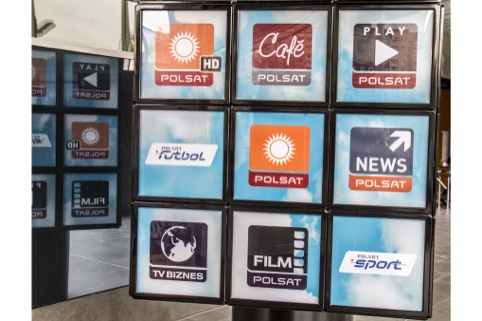
“The quality of the products and services we offer depends on the services and the quality of third party infrastructure, services and related functions,” says Adam Brodziak. “If these third parties on whom we rely do not meet our performance standards or provide technically flawed products or services, the quality of our products and services as well as our reputation may be harmed.”
The company’s decision to depend again on well-know products and services makes sense: After the successful integration of a news production system based on Avid technology back in 2008, the design and planning group at TV Polsat chose to use an Avid solution again.
“Why should we use something else, when we know what we can get”, explains Brodziak. “We knew Avid’s strong and weak points but after a long period of cooperation we knew how to solve the difficulties.”
The tapeless playout and production system design was brainstormed by a group which included the IT TV team, programmers and software engineers, operators, editors, archive personnel, journalists, QC department, traffic and even advertising staff. The idea behind it was that all needs should be taken into consideration before going into deep planning. The final design that went into the tender took another six months to be completed. In September 2011, the contract with Avid was signed and the final planning and programming phase of the system started with Avid and Warsaw-based systems integrator Adtv.
Phase one was the high-level design with the preparation of all documents, which took another three months, followed by phase two, a six-month period of generating the detailed specifications. “The core was the Interplay MAM system from Avid, but with the specific needs from Polsat, it became a dedicated almost proprietary solution, created by engineers from Avid, our own people and Adtv“, explains Brodziak.
Andrzej Szymanski, head of Polsat’s IT TV department, adds: “The existing Interplay PAM systems needed to be upgraded to the latest software version to make it interoperable with the new MAM solution being implemented with the current project. This was covered by the existing service level agreement with the manufacturer and therefore not a big problem.“
Broadcasting and television production
TV Polsat has been doing HD production and playout since 2007, after its purchase of three HD OB vans. In its progress toward HD, the studios for sports and show production together with all infrastructures have been migrated and refurbished concurrently. This was finalised in December 2012. To support this, the construction of the production system was conducted in stages, so that in turn all of the introduced and generated functionalities have been made available to users. The aim of the project was to build a tapeless playout and production system based on a digital archive.
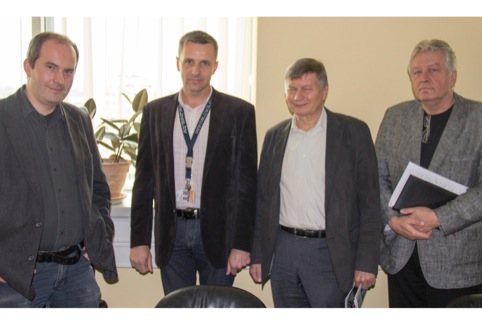
New MAM system
Polsat’s production systems incorporate central disk storage, station-wide media asset management and a deep archive. This required the integration of the central storage with the playout system, the Provys scheduling and the Aveco Astra automation systems to implement a new workflow for the playout.
The playout platform is based on GVG K2 video servers, managed by the Aveco Astra automation system that cooperates with Provys Traffic Management software. After importing playlists from Provys, Astra checks the playlist and playout servers in search of requested materials. If there are no materials found on the playout servers, the ingest server and MAM central storage are checked depending on the information about the origin of the files contained in the playlists. If there is material on an ingest server or on the MAM storage, then the transfer to the playout servers is initiated. If there is no material in the system, then the decision about its ingesting or tape playing is made.
Many functional groups (playout servers, automation and scheduling systems) within the production chain had to be integrated with the Interplay MAM platform. The Provys scheduling system creates various actions, which trigger other functional groups. The MAM system executes the rundowns according to this schedule, based on defined user interactions and workflows, and provides the interfacing or integration layer between all functional groups.
To support such a tapeless infrastructure together with a file-based workflow, material from the tape archive needs to be ingested. Such an integrated archive can collaborate with particular production computer systems which are connected to a computer and media backbone network (fibre, single and multi-mode GigE, HD-SDI) that is able to transfer traffic generated by the implemented workflows.
In 2009 a digital archive was implemented for news production system that is based on Avid Interplay and SGL FlashNet media management software. This archive, based on EMC2 CX-4 120C disk array, StorageTek SL500 tape library, SGL FlashNet and Avid Interplay management software, is a logical extension of the ISIS production disk space. The capacity of the tape library is about 230TB that equals 18,400h of DV25 4:2:0 material.
Organising the archive
The station’s digital archive is organised on two levels. The first level provides the central storage for storing archived versions of proxy and high-resolution materials used in current production. The central disk array is also used as an integration platform between the different production areas. The second level is called the deep archive (SGL Flashnet), that provides the HSM functionality, which is required to control a tape library (IBM tape robot with LTO drives) and interfaces with the MAM solution by an integration package of Interplay. For archived assets a high level of data safety is achieved under control of the HSM by duplicating file assets within the tape library on different tape groups. Within the archiving solution different levels of cataloguing of archive objects are performed accordingly to the predefined subjects, such as: sports, culture, politics, music, communication disasters, etc. An automatic QC process confirms internal standards and acceptance procedures.
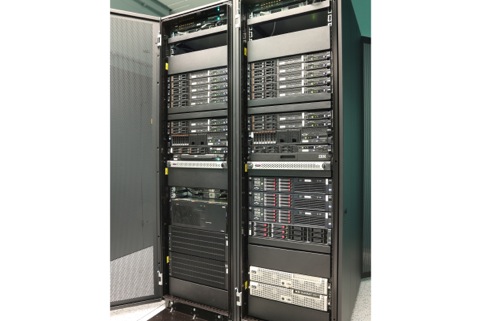
The nearline archive is directly attached to an Interplay MAM online storage solution providing fast access to assets that are in use or used frequently. To offer powerful query functions, metadata fields within Interplay MAM help to identify assets and also help schedule their transfer to the deep archive. This can also be initiated as a ‘direct move to the deep archive’ or as a ‘copy for safety reasons’. The capacity of this storage is roughly 80TB.
The browse storage attached to Interplay MAM contains the browse-/proxy or low- res versions (MPEG-4/H.264 at 800kbps) of all material (with optional watermarking), that has been registered and created during any ingest. Authorised users can browse the asset across the Polsat network and can generate simple EDL‘s. Because of the fact that the resolution as well as the bitrate has a direct impact on the amount of required browse storage, its capacity was designed to be about 60TB (130,000h of material at 1Mbps) for the beginning.
There are also specified production areas interconnected by a computer network. The data and material exchange are difficult, because in each of the areas different formats and compression schemes are used. The formats and compressions used within the production areas adapt to the requirements executed by Vantage and Carbon Coder transcoding servers.
The core element of the post production system is an Avid ISIS shared disk array and the Interplay media management platform. All Media Composer editing workstations (NLE) are equipped with Adrenaline and Mojo SDI external accelerators.
Fulfillment
Choosing an Avid solution again was not just a question of confidence but also depended on reliability and stability of an existing installation in the news production being used for over five years already. In developing a tapeless production infrastructure, the IT department had to fulfill all necessary requirements, such as the bidirectional transport of HD signals over the network as well as supporting streams of up to 50Mbps bandwidth HD files.
“The project was so special because it has not been software off the shelf – it was created at the facilities and needed a lot of programming and adaptation to support all legacy interfaces and databases“, explains Brodziak. “It was hard work for both sides: the vendor together with the manufacturers as well as for the IT engineers in charge of the project.”
Although the tapeless system has been in operation since mid 2013, there are still some elements which are not being fully used. The concurrent 300 licenses show the amount of possible users and applications. It is not a question of training more operators, but of understanding and exploiting the new expanded capabilities of the system. The current goal is to optimise the system and to train the users to make best use of it.
The currently used workspace storage provides a total of 2.5PB for about 110,000 programme units which is filled by three parallel ingest paths in 24/7/365 mode (daily 155TB, monthly 465TB and yearly 558TB) as well as by growing files import. Overall, for all archiving needs a requirement for an increase of the yearly workspace should be taken on a 1PB level.
Solving problems
In adopting the system, there were some early difficulties with the interoperability between the MAM and PAM systems, caused by the interfaces and the MXF wrappers. In addition, there have been problems with formats, with information about the aspect ratio getting lost after importing material into the archive. While retrieving the material from the archive it was displayed in the wrong format. The information had been lost at the MPI software component – MAM PAM Interoperability.
The Polsat engineers sat together and proposed a solution, which then was implemented by the programmers from Avid into specific subfolders containing the correct information. Such trouble-shooting can be compared with open-heart surgery where any mistake can cause the death of the system. Sometimes such ‘problems’ can lead to a delay of the final acceptance of the whole package. But in November 2013, with all problems addressed, Polsat’s tapeless infrastructure went into full operation
Polsat’s new post production configuration
Servers
- 7 x Isis chassis, total capacity 224TB
- 4 x System Director
- 3 x Interplay Engine
- 4 x Interplay Media Indexer
- 4 x Interplay Transcoder
- 2 x Interplay Transfer Manager
- 19 x Airspeed
- 2 x iNews
Workstations
- 117 x VideoClient (MediaComposer Adrenaline/Mojo SDI, Assist)
- 2 x Protools (audio processing)
- 1 x DS (compositing workstation)
Network infrastructure
- 2 x CiscoNexus7000
- 7 x CiscoCatalyst4948
- 5 x CiscoCatalyst3750

